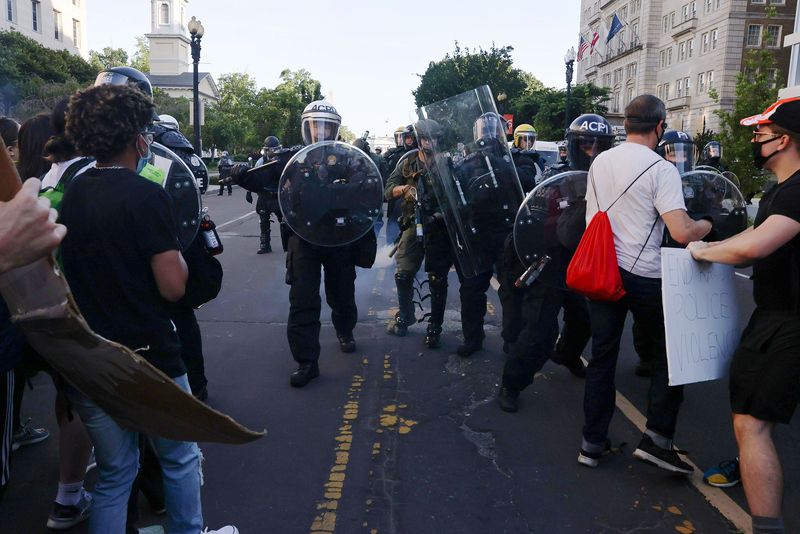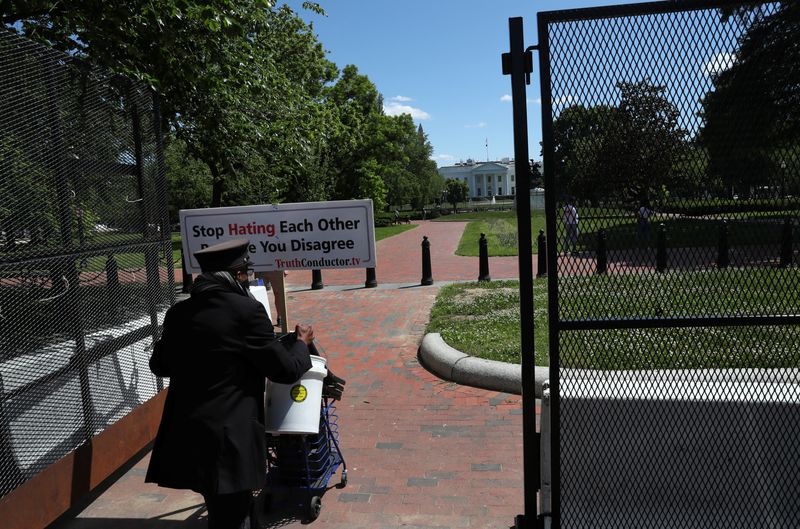By Jan Wolfe and Ismail Shakil
(Reuters) - U.S. law enforcement agencies have agreed to change some of their policies for responding to demonstrations on federal property, part of a partial settlement agreement reached with Black Lives Matter protesters who were violently cleared from a park near the White House in June 2020.
The Justice Department has settled claims in four civil lawsuits brought by racial justice demonstrators who said their rights were violated in Lafayette Square in Washington, D.C., according to a Justice Department press release https://www.justice.gov/opa/pr/justice-department-announces-civil-settlement-lafayette-square-cases issued on Wednesday.
As part of the settlement, U.S. Park Police officers will face new limits on the use of non-lethal force and procedures to facilitate safe crowd dispersal, the Justice Department said.
The partial settlement agreement calls for Black Lives Matter D.C., a plaintiff in the litigation, to dismiss claims for non-monetary relief against the U.S. government. The plaintiffs are continuing to seek financial compensation from some defendants.
The U.S. government did not admit any wrongdoing as part of the settlement.
"We are pleased that the Biden Administration is taking an important step to protect protesters’ rights so that what happened on June 1, 2020 doesn’t happen again," said Scott Michelman, a lawyer with the American Civil Liberties of the District of Columbia involved in the litigation.
The lawsuits alleged that federal agencies used unreasonable force to enable a "photo op" of former President Donald Trump holding a Bible outside of St. John’s Church, a historic building near the White House.
A federal judge narrowed the litigation last year, ruling that federal defendants such as then-Attorney General William Barr were immune from any potential liability.
A U.S. government watchdog has rejected the claim that police cleared protesters so Trump could pose for a photograph. In a June 2021 report, the U.S. Interior Department’s inspector general said police dispersed protesters as part of a plan made earlier in the day for a contractor to install fencing.

The violent clearing of protesters sparked divisions and frustration among some White House staff, and a top military official later apologized for walking with Trump before television cameras that day.
“I should not have been there,” Gen. Mark A. Milley, the chairman of the Joint Chiefs of Staff, said in a videotaped statement. “My presence in that moment and in that environment created a perception of the military involved in domestic politics.”
